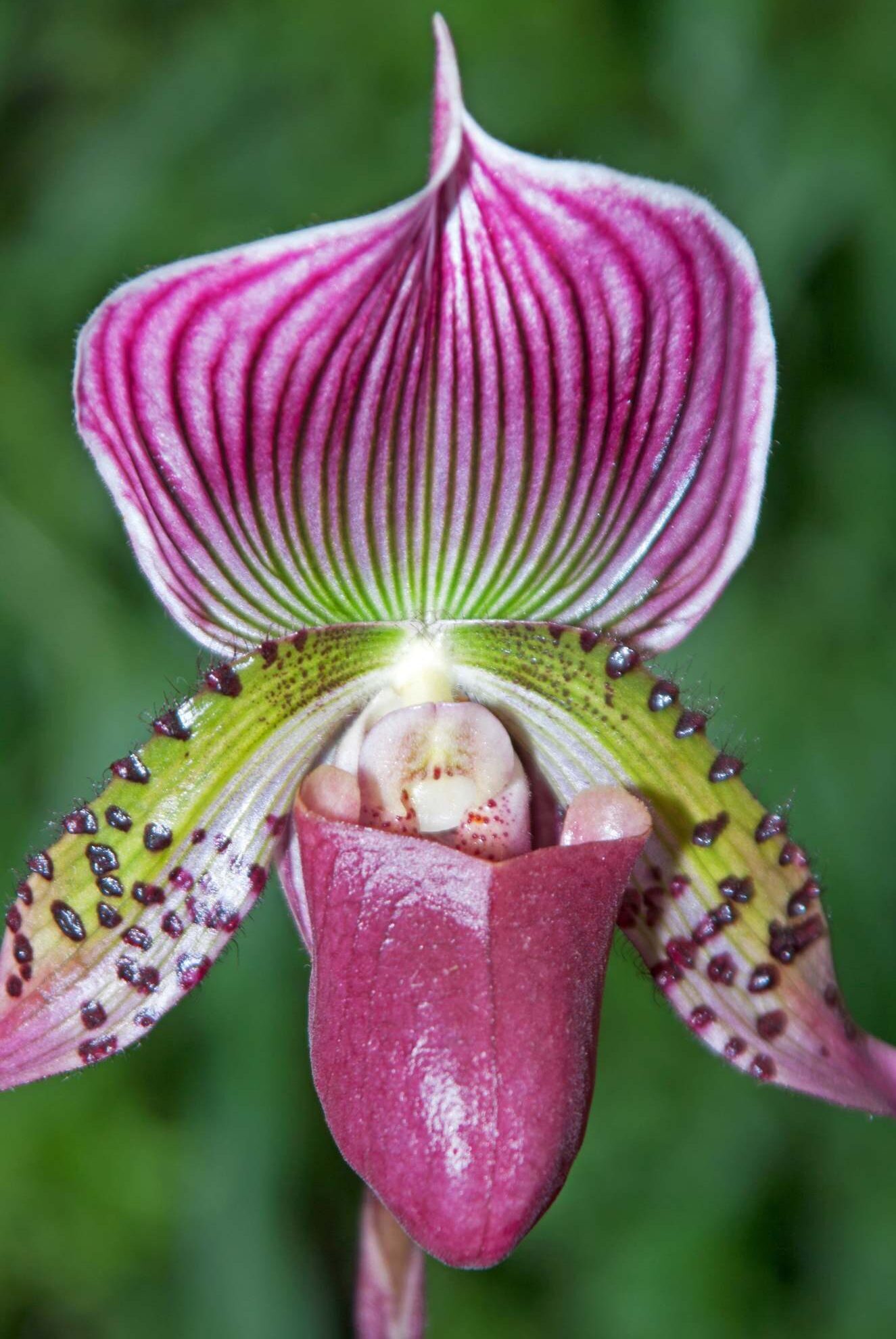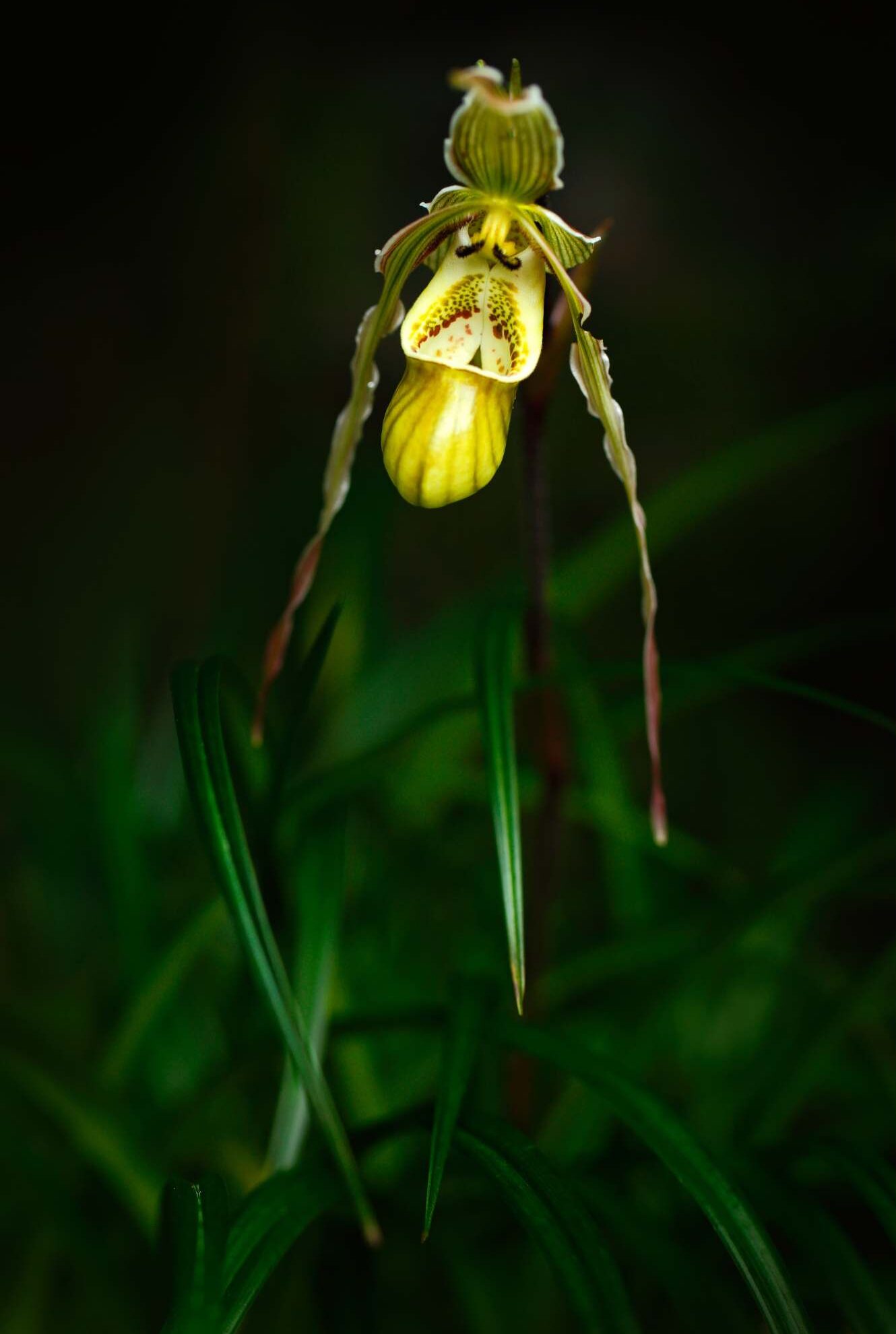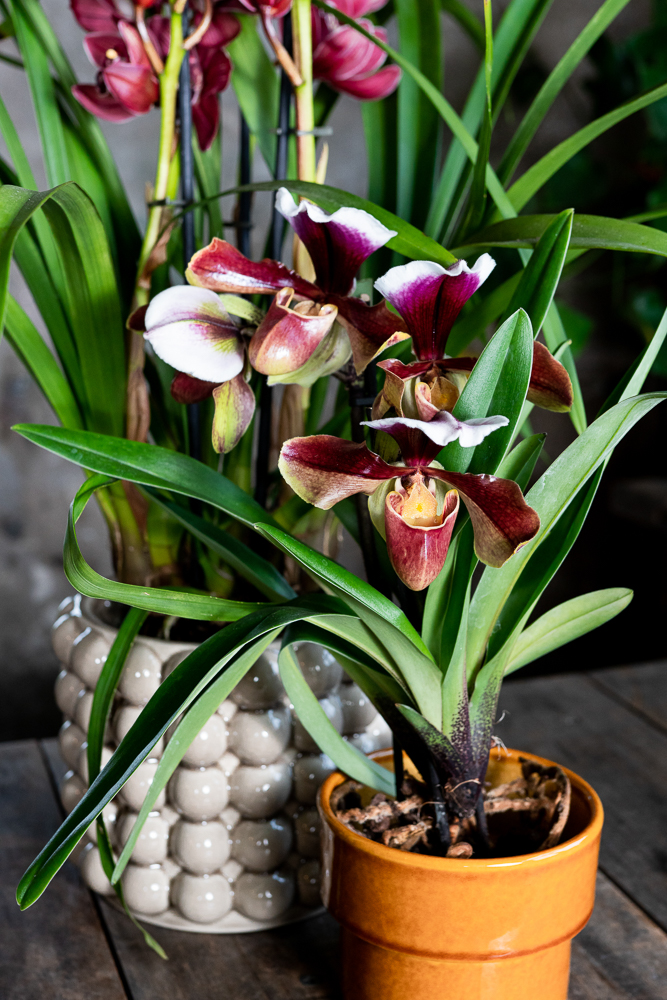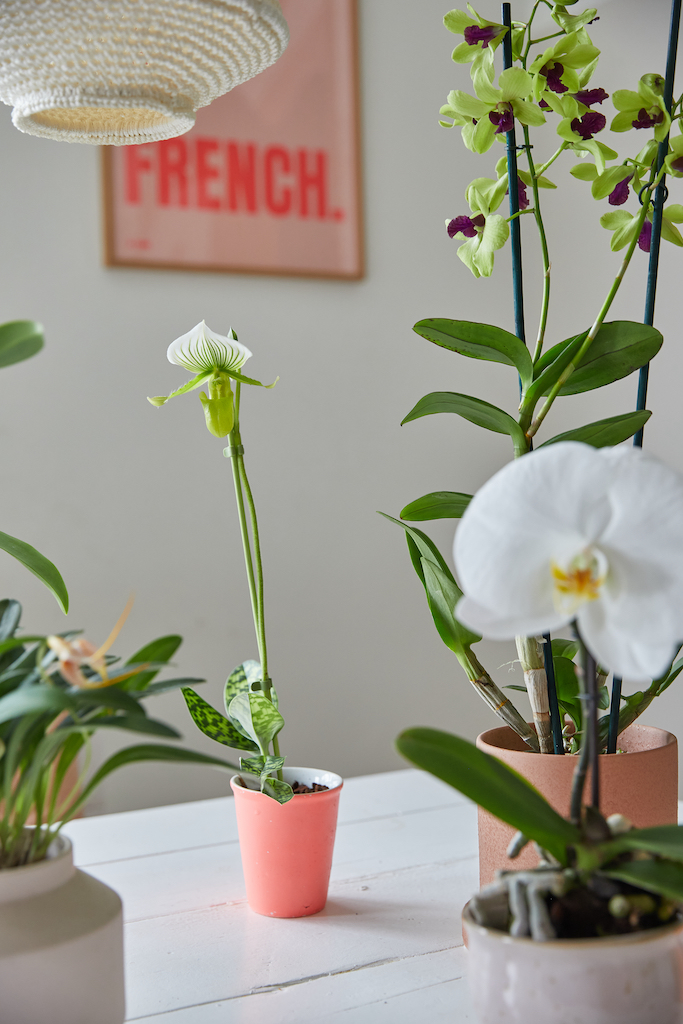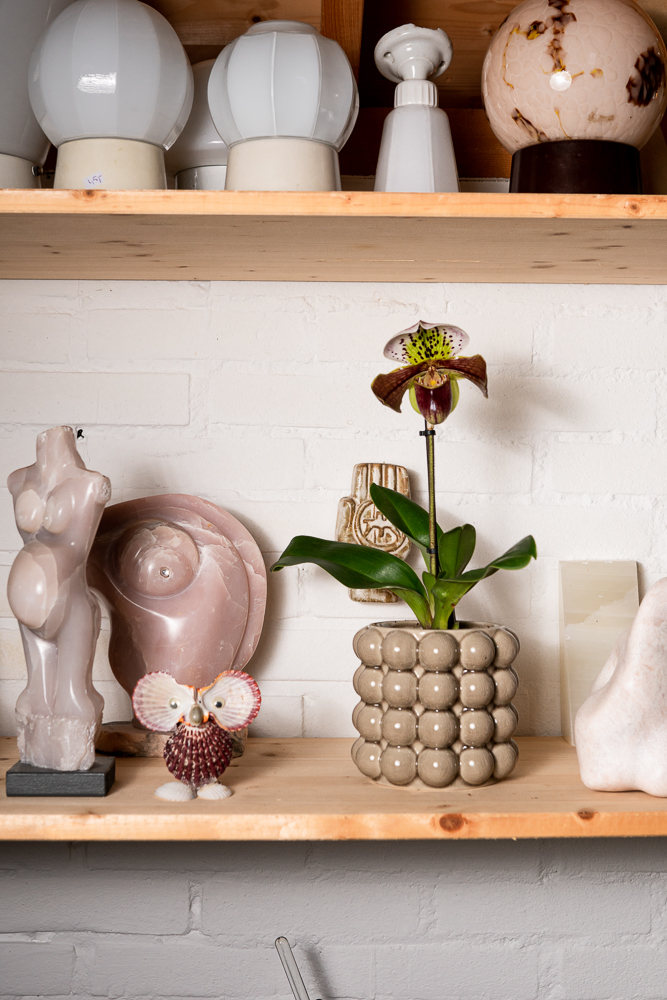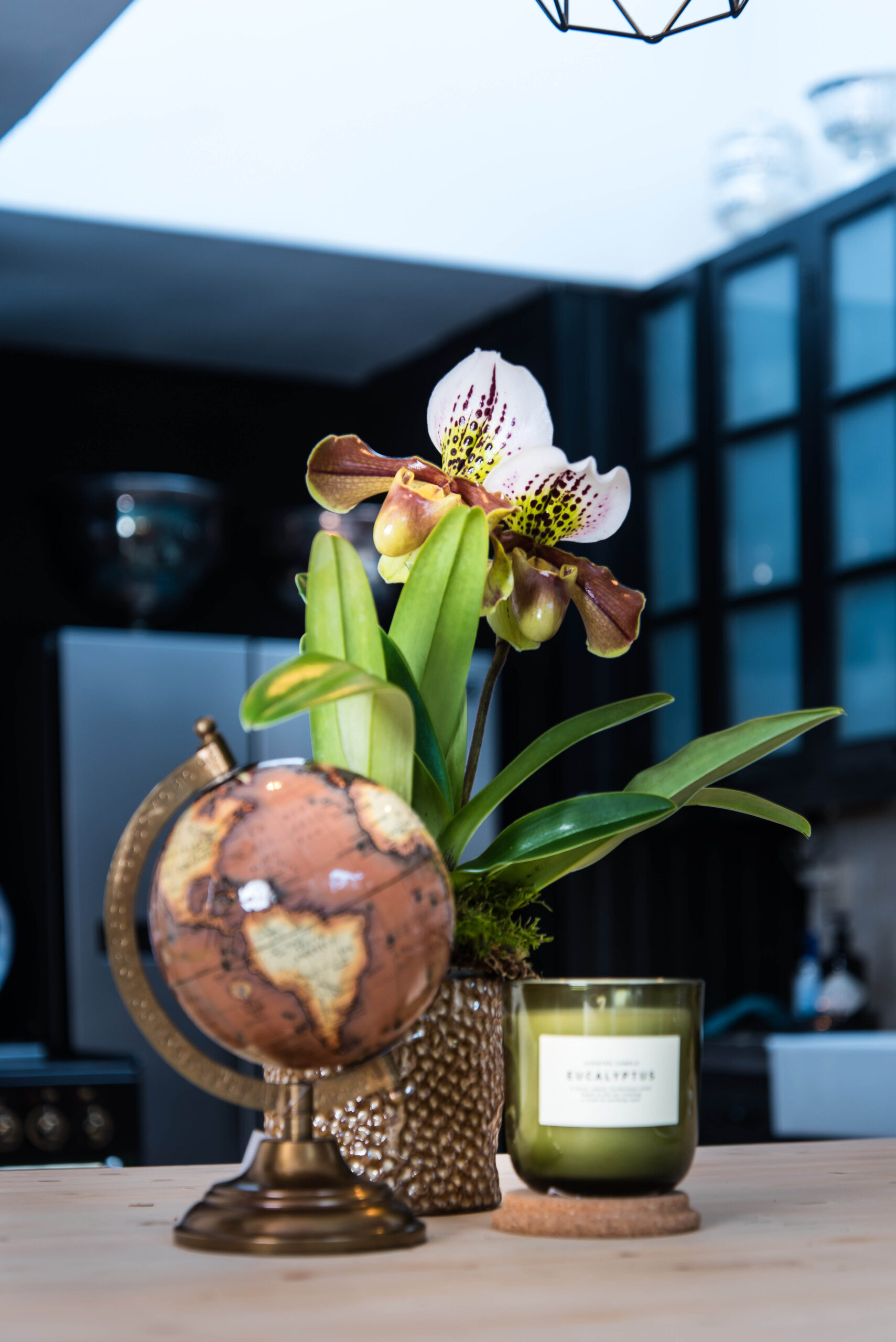12 fun facts about the Paphiopedilum
The Paphiopedilum is an elegant orchid with an eye-catching lip, slender stem and sweeping petals. Thanks to the shoe-shaped lip, this plant is also called the Venus slipper, lady slipper or slipper orchid. Because if you see the lip separate from the flower, it looks just like a slipper! But that’s not all that’s special about this orchid. In this article, you can read 11 more fun facts about the Paphiopedilum!
Also read: These are the 11 most popular types of Orchids
12 fun facts about the Paphiopedilum
2. The shoe-shaped lip of the Paphiopedilum not only makes for a cute nickname, but it also helps in pollination. It gives off an odour – inaudible to humans – and lures flies into its mouth. Once inside the mirror-smooth lip, there is only one way out: along a staircase of hairs at the back of the lip, past the pollen and pistil.
3. A few Paphiopedilums and Phragmipediums have such long petals on their flower that they reach their leaves or sometimes even the ground. These petals then serve as a path for crawling insects to walk to the mouth and take care of pollination there.
- Paphiopedilum
- Phragmipedium
4. Paphiopedilums are propagated mainly through seeds. After pollination, the flower falls from the stem and the ovary at the top of the stem swells. Depending on the variety, the seed must ripen on the plant for six months to a year, before the seed pod can be harvested and sown on special soil with the necessary nutrients for germination.
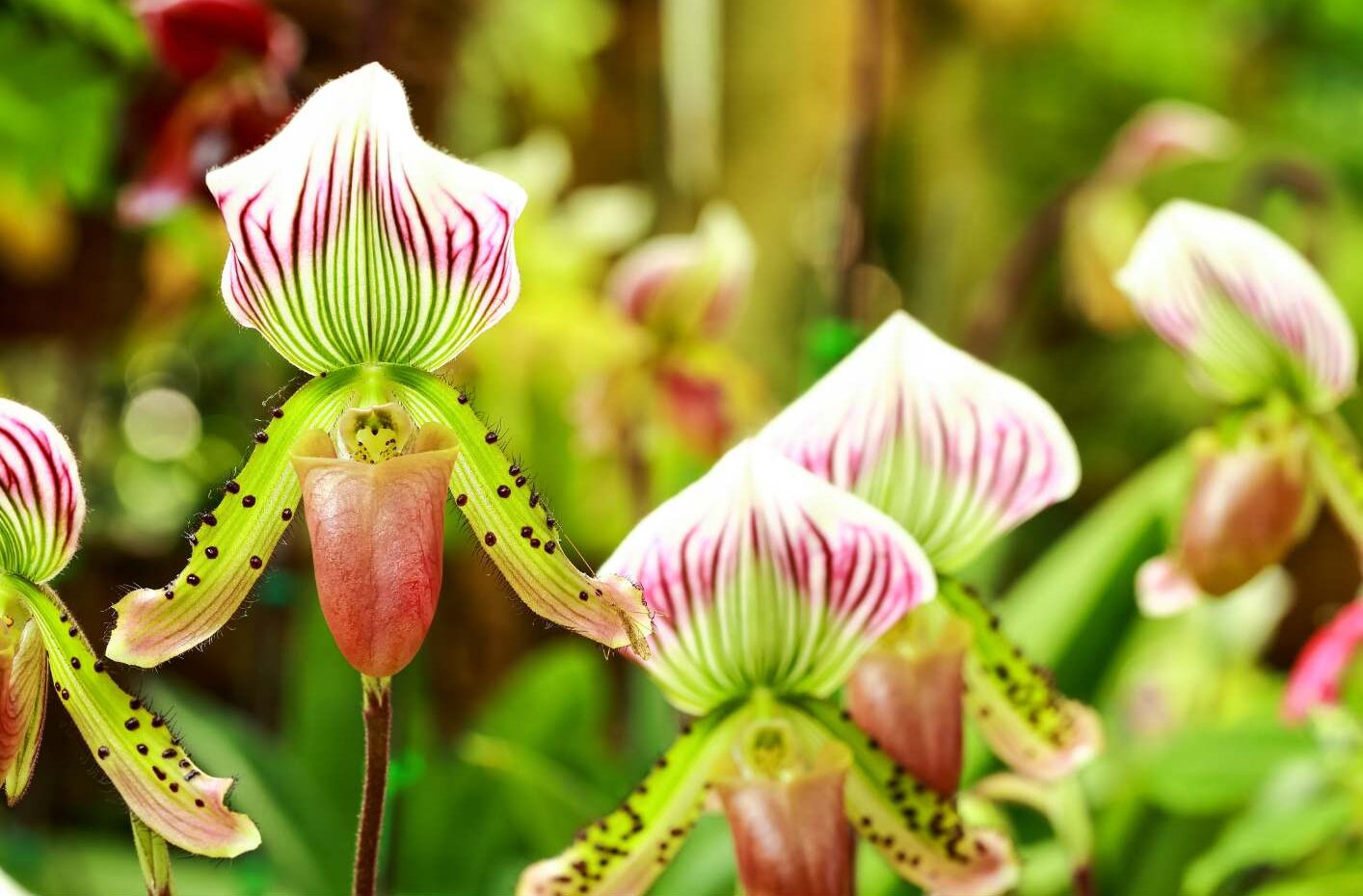
5. The seed pod contains tens of thousands of seeds, as fine as dust. This seed doesn’t carry any nutrients for germination and must enter into a symbiosis with certain fungi. So in nature, the seed must fall in the right place in order to germinate. In the laboratory, we make a breeding ground with special nutrients, including bananas, that help the fine seed germinate. The germination process takes up to several months.
6. Paphiopedilum is a large family with many diverse species. From very small to large flowers, from green leaves to variegated leaves with flower colours from white-green to almost black, and from solid colours to speckles and stripes.
7. Paphiopedilums are sympodial orchids. These orchids grow from a horizontal stem instead of a vertical stem. Sympodial orchids have multiple stalks – or pseudobulbs – which increase in number every year. Usually, these new pseudobulbs emerge from the side of an older pseudobulb.
8. Paphiopedilums are southeast Asian orchids which are native to humid forests. While the majority of orchids are epiphytes (grow in trees), Paphiopedilums are mostly terrestrial. This means they usually grow amongst rocks, moss and leaf litter. That’s why the Paphiopedilum doesn’t like direct sunlight: in nature, it’s protected by the foliage of the trees.
9. The Paphiopedilum is a ground orchid. There is no chlorophyll in the roots; therefore, the plant isn’t placed in a transparent pot.
10. The Paphiopedilum flowers for about 6 to 12 weeks, depending on the variety.
11. The process of crossing, seed, germination and growth into a flowering plant takes about 6 years.
12. The Dutch American Hybrids are crossed to be grown sustainably, with fewer diseases and easy re-flowering in the living room.
Paphiopedilum care tips
A few Paphiopedilum care tips:
- Water your Paphiopedilum once a week, slightly more in the summer. Make sure that no water remains at the bottom of the outer pot.
- Paphiopedilums are shade plants, so don’t place them in direct sunlight.
- Did your Paphiopedilum finish flowering? Then remove the stem as deep as possible and place the plant in a cooler room. Also give it a little less water, which promotes bud induction in the new shoots.
- Keep the plant cooler for about six weeks and then treat it again with sufficient light, water and a warmer temperature. This in turn gives new shoot growth, which is necessary for subsequent flowering.

